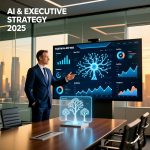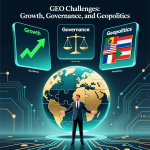The role of a CEO has never been more complex, and never more human. The title no longer belongs to the untouchable executive at the top of the corporate hierarchy. The modern CEO is both strategist and storyteller, visionary and listener, risk-taker and guardian. The world now moves faster than the traditional business cycle, and every decision is amplified by technology, public scrutiny, and shifting global expectations. The modern leader is no longer defined solely by the size of a balance sheet but by the depth of purpose and agility in navigating change.
The modern CEO carries the weight of constant acceleration. The markets move in real time, and regulation evolves with every disruption, from artificial intelligence to carbon accountability. The pace of decision-making has outstripped traditional corporate governance, and CEOs find themselves balancing speed with reflection. The demand for “velocity” in leadership has become both a virtue and a burden. The leader who reacts without structure risks chaos; the one who waits for perfect clarity risks irrelevance. The best CEOs today build dynamic organizations capable of acting fast without thinking shallow. They surround themselves with agile thinkers who understand both compliance and creativity.
The challenge of vision is equally demanding. The modern CEO must forecast beyond the next quarter and see patterns invisible to most. The ability to sense economic shifts, technological disruption, and social sentiment is what separates exceptional leadership from ordinary management. The CEO must interpret global uncertainty, inflation cycles, geopolitical conflict, regulatory tightening, or digital transformation, not as threats but as forces that can be shaped into opportunities. The task is to imagine how a business remains relevant when the rules of relevance change every year. The truly visionary leader builds systems that adapt faster than markets move.
The human element of leadership has also changed fundamentally. The age of command-and-control leadership is over. The workforce of today is driven less by hierarchy and more by meaning. The pandemic and the rise of remote work permanently altered the employer-employee contract. The modern CEO is now expected to embody empathy, authenticity, and cultural intelligence, qualities once dismissed as soft but now critical for retention and innovation. The ability to communicate vulnerability is no longer a weakness but a strength. The CEO who admits uncertainty earns credibility; the one who pretends to be omniscient loses trust. The culture of leadership is shifting from authority to authenticity, from management to mentorship.
The modern CEO also operates under the constant gaze of the public. The boundary between corporate decision and social responsibility has vanished. The company is now a citizen of society, and every policy, from data privacy to climate reporting, becomes a reflection of its leadership values. The markets reward transparency, but the public demands conviction. The CEO must manage investors, regulators, and social media narratives simultaneously. The rise of Environmental, Social, and Governance (ESG) frameworks has elevated ethical leadership from a voluntary principle to a performance metric. The modern leader is expected to demonstrate that profitability and purpose are not mutually exclusive.

The financial realities, however, remain ruthless. The post-pandemic economy has exposed the fragility of global supply chains, the volatility of capital markets, and the speed at which investor sentiment can shift. The CEO’s decisions are no longer confined to strategy rooms; they ripple across continents in seconds. The challenge lies in balancing short-term shareholder demands with long-term resilience. The company that optimizes for quarterly numbers at the expense of adaptability risks extinction. The modern CEO, therefore, must be both a steward of stability and an architect of evolution.
The digital transformation has made leadership even more multidimensional. The algorithms that once supported operations now shape entire business models. Artificial intelligence, automation, and data analytics have become extensions of strategic thinking. The CEO who fails to understand these tools will be managed by them instead. The boardroom discussions now include data ethics, cybersecurity, and digital sovereignty, subjects once reserved for technologists but central to corporate governance. The modern CEO must speak the language of both technology and trust.
The psychological burden of leadership in this environment cannot be understated. The modern CEO is expected to lead through crises that are global, unpredictable, and often unprecedented, pandemics, wars, financial shocks, and political polarization. The isolation of decision-making at the top is real. The best leaders build systems of peer connection, mentorship, and advisory networks that keep them intellectually challenged and emotionally grounded. The modern CEO recognizes that personal resilience is not a luxury but a leadership necessity.
The future of leadership belongs to those who integrate three dimensions seamlessly: vision, vulnerability, and velocity. The vision gives direction, vulnerability builds trust, and the velocity creates momentum. The leader who balances all three defines the organizations that will thrive in this decade of disruption. The essence of modern leadership is not about having all the answers but about creating environments where the right questions can be asked without fear. The modern CEO, unscripted and authentic, no longer leads from the front but from the center, connected, conscious, and consistently learning.
__________________________________________________________________________
The write is a founder of “CEO Unscripted”






